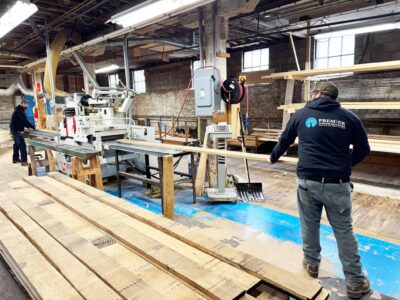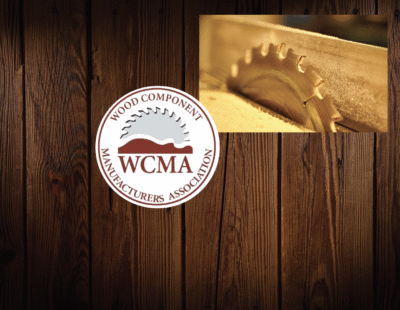Southeast Trends 2025 – Plenty Of Trucks And Room For Trade Negotiations
Southeastern lumber salesmen are concerned about labor issues and the fate of trade. Despite market shake-ups, some report an increase in demand but it may not last.
In Alabama, a lumber source rated the market as “somewhat slow” and “confusing.” He thinks the tariffs “might be a part of it. Even looking at domestic use without the tariffs, it’s kind of confusing that our production level in the industry is quite low now and there’s no demand pull. There seems to be enough inventory left over from several months ago.”
It is “about the same” as it was six months ago.
They offer Red and White Oak and Poplar, which is selling the best. They primarily work with 4/4 and “all NHLA grades.”
Flooring manufacturers and concentration yards are his main customers, who have reported that the market for their own products is slow, too. “Each one is more particular about the grade they use now. I think they’re just trying to get through it.”
He shared his thoughts on their experience with transportation, which “is quite easy with the limited supply that we’ve had,” he said. “We’ve only been running every other month. The hardwood log supply is low, so it hasn’t been a problem, and I am probably getting eight to 10 calls a week from brokers looking for business.”
“The paper mills have kind of shut off the hardwood pulpwood here as if they have plenty of white paper. Up until about a month ago, I was watching 18 loads a day of pine pulpwood go past the door. They do more container board and lighter board projects with pine because it has longer strands than hardwood does. The loggers here have been placed on quotas as of a couple of weeks ago, so I’m only seeing five to six loads going past instead of 12 to 18. There must be less demand for cardboard boxes.”
Considering the “supply we have, we’re in good condition on labor. If we were up to what we were seven or eight years ago, labor would be very difficult. We had a few more people but couldn’t get more to keep things running smoothly. We’re down to our skeleton crew right now.”
He reported that back in April, “another” mill in their area closed and “since 2017, we’ve got 240 million board feet of annual receiving capacity that has dried up.”
According to a lumber representative in Georgia, “an hour after the 90-day reprieve on tariffs was announced, the market picked up. We went from shipping nothing to shipping about 100 containers.” A woman in China that works with the company reached out, wanting “everything on order” shipped as “quickly as possible. I told her that my concern is ship and booking availability and ship space. I’m hoping that in those 90 days, a more concrete, long-term solution that gives us more stable business is reached.”
He would like to see “as much business come back to the U.S. as possible but at least with a fair trade deal, it’s working to the advantages of both sides instead of one.”
“At this point, it is better,” he commented. He also noted that if he had been contacted earlier in the day, “It wouldn’t have been the same answer- it would have been ‘nothing is moving, and certain things are going to be tough.’ We couldn’t have taken another 30 to 60 days. We would have to shut down because we wouldn’t have any place to put kiln-dried lumber.”
He listed Red and White Oak, Poplar, Ash and Cypress “strictly in 4/4” as their product line. They work with “all grades” such as No. 1, No. 2 and No. 3A Common in addition to FAS. Red Oak is their best seller. “It’s moving well. Poplar is moving well. FAS and Better Poplar is moving well domestically. White Oak is still struggling. The prices are still good but there is just not a lot moving. The greatest thing to have used to be White Oak and the No. 2 and No. 3 Common are still moving well because of the flooring plants. The No. 1 Common and FAS have slowed down for me.”
They “do a lot of distribution in China” and sell to “several factories. We have a good mix of wholesalers and direct to distribution customers.” They sell directly to certain customers that they have been “working with for many years,” as well. They also sell to domestic flooring, moulding and millwork customers who do remodeling.”

He mentioned that a customer of his in Florida said that his business has “slowed down but it is still steady —it’s just not as robust as it was three or four months ago. It has slowed down regionally.”
For his company, labor has “always been an issue but on my end, I have had a good group for a long time. In other parts of the mill, we are always having issues with labor.”
He shared that domestic trucking “is very difficult and seems to be a real problem. There are either too many trucks or not enough. It’s like the whole hardwood industry is a feast or famine.”
Despite these difficulties, he holds onto hope. “We’ve got India and these other countries that we can just move production to, but we can’t do that overnight. The best thing to do is to have a slow transition to those places. If this lasts and we get a long-term, fair agreement going both ways with China, I think it will work out for both of us. China can’t afford for it not to work because they’re struggling economically and the reality is, we need it to work. As of now, I’m very optimistic about what this summer has for mixed hardwood species.”
In North Carolina, a lumber salesman stated that very little has changed for him. “We have kind of the same problems going on like the tariffs disrupting the market but we’re back on shipping again even though that’s only for three or four weeks. Then, we’re back in the same spot we were because we do a lot of exporting.”
He added that it is “worse” than six months ago, but the market has “improved a little bit. It’s going to be short-lived, however. We can’t increase prices.”
Poplar in 4/4 through 8/4 in “all the grades” is what they carry.
They sell to “anybody” such as “wholesalers, distribution yards and end-use manufacturers.” His customers are “in the same place” he is regarding the market for their products, taking on a “wait-and-see” approach.
They get “at least five calls a day” for trucking because it is “plentiful.”








